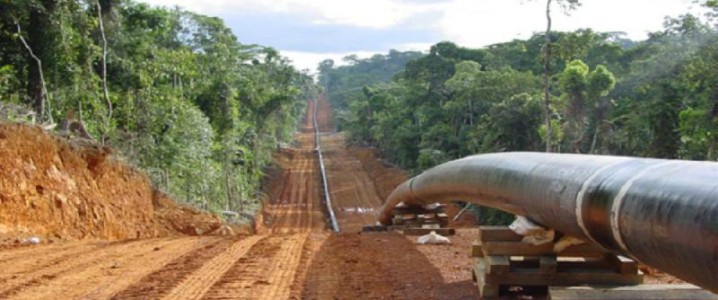African countries have recently started making more and more headlines with their plans to develop local oil and gas reserves despite strong opposition from foreign environmentalist organisations and international lenders. The latest to join the oil and gas club is Sierra Leone. And it has big plans for its hydrocarbons.
The small Western African state earlier this month concluded a round of seismic research that it now hopes would lure international oil majors in, after several discoveries that failed to produce commercial volumes of hydrocarbons. U.S. Anadarko and Russia’s Lukoil were exploring in the country’s waters but did not make any major find—although Anadarko struck potentially commercial oil at several offshore sites about a decade ago.
Despite a tough start, hopes remain high, and Sierra Leone is planning a new licensing round later this year based on the results of the new survey. “The reprocessing of that data is happening now with our multi-client partners, TGS, and we are hoping to get something to push to the market in October,” said the head of the country’s Petroleum Directorate, as quoted by Reuters, last week. Foday Mansaray added that several oil majors had bought the new data, including Shell, Hess Corp., Murphy Oil, and Brazil’s Petrobras.
Nestled between Ivory Coast and Guinea, Sierra Leone has estimated hydrocarbon reserves of some 30 billion recoverable barrels of oil equivalent. Of this, an estimated 3 billion barrels lie in a single discovery made by Anadarko over 10 years ago: the Vega prospect. The prospect’s development has stalled since its discovery, however, as the company concluded, based on early exploration, that it was not commercially viable. The same has happened to Anadarko’s three other discoveries and Lukoil’s Savannah discovery.
It wasn’t just that early exploration data. In 2014, Sierra Leone suffered an outbreak of Ebola, which interfered with its foreign investment plans, to put it mildly, and then the net-zero narrative started gathering pace, discouraging investors from betting on oil and gas. This only serves to highlight the change in sentiment over the past decade—and why oil and gas are so back.
In its latest issue of the Statistical Review of World Energy, the Energy Institute reported that demand for oil and gas globally had increased for yet another year in 2024. The increase was modest, at 1% but still an increase, despite forecasts of peak demand for hydrocarbons. This increase was the result of a general rise in energy demand—which prompted a boost in oil, gas, and coal consumption.
“Electrification is accelerating, particularly across developing economies where access to modern energy is expanding rapidly. However, the pace of renewable deployment continues to be outstripped by overall demand growth, 60% of which was met by fossil fuels,” the president of the Energy Institute, Andy Brown, said at the release of the data.
So, if the world is consuming ever more energy and wind and solar cannot meet it, then the world will continue needing oil and gas in still-growing volumes—and new sources of supply. This is why Sierra Leone has these high hopes and is investing in seismic surveys. Because legacy production regions are not going to produce forever. Petrobras is an example. The company recently said it has plans for international expansion with a focus on Africa. The reason: natural depletion at some of its fields at home.
Petrobras is not alone in the hunt for new discoveries that have revived interest in African exploration. Italy’s Eni recently acquired four new offshore blocks in Sierra Leone’s neighbour, Ivory Coast, as part of a large-scale project that is supposed to be the first net-zero offshore oil development ever. TotalEnergies earlier in the year received an offshore exploration license for an offshore block in Sao Tome and Principe – an island off the western coast of Africa close to OPEC member Equatorial Guinea. Liberia has also joined the ranks of prospective future oil producers in Africa with a licensing round for as many as 29 blocks earlier this year.
Given its proximity to the Ivory Coast and Senegal, and the similar geology, Sierra Leone has good reason for its energy hopes. But it’s not just clinging to these hopes. The authorities in the West African state have cut red tape in order to facilitate foreign energy investment. “From letter of intent to license, our process will not exceed 85 days. Our investment terms are very simple,” the Petroleum Directorate’s Mansaray said earlier this year.
In this, Sierra Leone is joining a trend across the continent. African governments are turning their backs on transition promises with little substance and instead turning to exploiting their countries’ natural resources. As one now former Big Oil top executive said a few years ago, as long as there is demand for oil and gas, there will be supply.
By Irina Slav for Oilprice.com
More Top Reads From Oilprice.com
